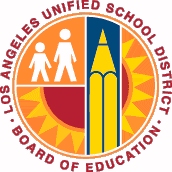Other Case Studies
The SMART partnership supports improved law enforcement and biological monitoring in protected areas around the world. They came to Refractions to build a software tool to help meet their needs.
Hectares BC – Biodiversity BC on behalf of a broad partnership
Biodiversity BC and its government and non-government partners were looking for regional-level environmental statistics. Refractions proposed a new approach to generating GIS summaries, using the power of a relational database and web tools to provide GIS analysis to users who previously had no access to it.
Automated Route Planning for Meter Reading – City of Vancouver
The City of Vancouver collects water readings from thousands of residences and businesses, but has never optimized the pedestrian routes the readers take. Refractions developed algorithms to create the most efficient routes of the correct length for readers.
Digital Road Atlas – BC Integrated Land Management Bureau
Refractions provides full-service support for the British Columbia Digital Roads Atlas – systems design, maintenance, data conflation, client service, and rapid response.
Caribou Habitat Assessment and Supply Estimator – Wildlife Infometrics Inc.
Refractions converted a legacy habitat modelling system based on ArcView 3.X to ArcGIS 9.2, and automated the workflow to provide faster turnaround time for model runs.
Line Cleaner – BC Ministry of Forests
The British Columbia Ministry of Forests needed a tool to conflate multiple roads databases into a single working layer. Refractions delivered the algorithms and a user interface based on the uDig platform.
Interest Reports – BC Ministry of Agriculture & Lands
Refractions developed an ArcMap extension to automate the calculation of standard reports joining a massive shape-file archive with a large Oracle database.
Mobile GIS – UN Food & Agriculture Organization
UN FAO needed a data collection tool that could run disconnected and didn't have a per-seat licensing cost. Refractions delivered a simple tool using the uDig desktop platform.
Open Web Services, Phase 3 – Open Geospatial Consortium
The Open Geospatial Consortium runs regular “testbed” projects to field-test new concepts in geospatial interoperability. Refractions was a part of the OWS-3 initiative, and built a uDig-based “GeoDSS” client to provide access to several other OGC standard services, including a prototype GeoVideo service.
Natural Language Spatial Search Engine for Rental Places-Rento
Rento is a free web service that makes it easy to find a place to rent in Greece. Powered by PostgreSQL and PostGIS, it provides ad listings with photographs displayed on a map. Searching is accomplished through map navigation and natural language processing, with the search engine being capable of answering complex (spatial) questions such as "flat near the University of Athens" or "loft up to 800 euros near a metro station" (in greek).
Parcel Mapping System – Los Angeles Unified School District

Our Client
Los Angeles Unified School District
California, USA
http://www.lausd.k12.ca.us
Project Background
Between 2000 and 2010, the Los Angeles Unified School District (LAUSD) is building hundreds of new schools in the Greater Los Angeles area. Using their existing real estate management system, LAUSD was able to manage and track the acquisition of properties, relocation of residents, and current state of building construction. However, to make the system more informative, they sought to add a method of visualizing building footprints relative to the land parcels under consideration.
Refractions' Solution
Refractions met with LAUSD developers and managers to discuss the details of their existing system and how a new mapping application should be integrated. The LAUSD content management system was OpenACS, and LAUSD had deployed it on a PostgreSQL database backend.
Because LAUSD was already using PostgreSQL, we recommended building the spatial component of the application right into their existing database infrastructure, using PostGIS.
We proceeded with the implementation in stages:
- First, we built a prototype mapping application to demonstrate to the LAUSD, who were quite new to the concept of GIS, how the mapping component would operate.
- Changes were made to the prototype based on feedback from the LAUSD stakeholders.
- Once the prototype was accepted, Refractions began integrating the mapping component into LAUSD's OpenACS-based environment.
Steps were taken during the integration to ensure the minimum possible interruptions to LAUSD's IT environment. Once the development was complete, Refractions provided a week of on-site support and training, to ensure that LAUSD development staff could maintain and update the mapping software independently. Finally, Refractions worked with the LAUSD development team to deploy the new component in their test and final production environments.
The Result
The integration of a custom mapping component allows LAUSD development managers to:
- Visualize proposed building footprints relative to property parcels, roads and other geographic data ;
- Print reports showing the building footprints and property parcels, as well as status information about the building plan and property acquisitions; and
- Access these functions without leaving the familiar interface of their pre-existing property management software.
By integrating with the existing LAUSD infrastructure, and using complementary open source components, our solution has given LAUSD control over their new GIS functionality. The OpenACS code modules we delivered are familiar to the LAUSD technical team, and can be managed in-line with the rest of the LAUSD web applications.